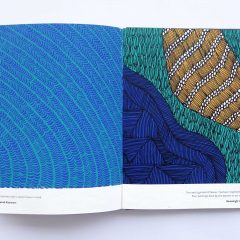Mayur and Tushar Vayeda “The Deep” (Tara Books, Chennai, 2020) ISBN: 978-81-93984-18-5
Tara Books
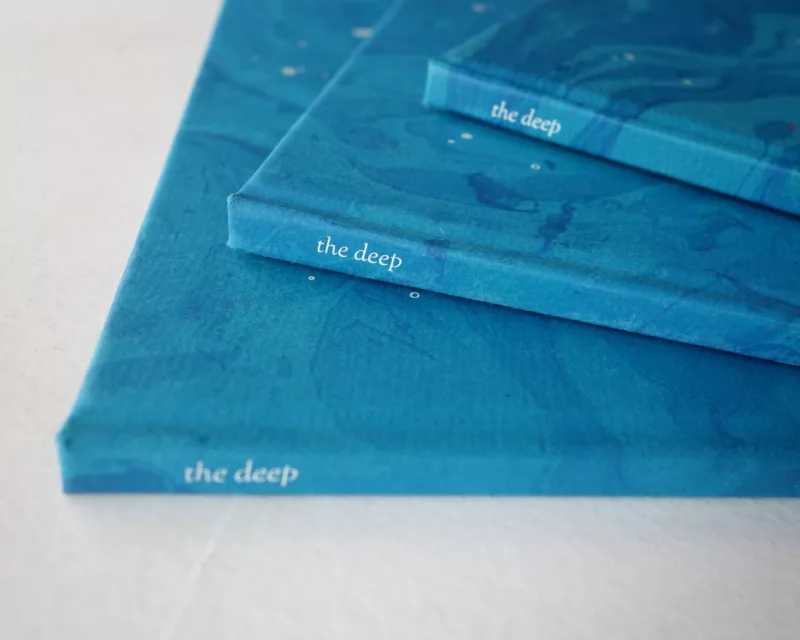
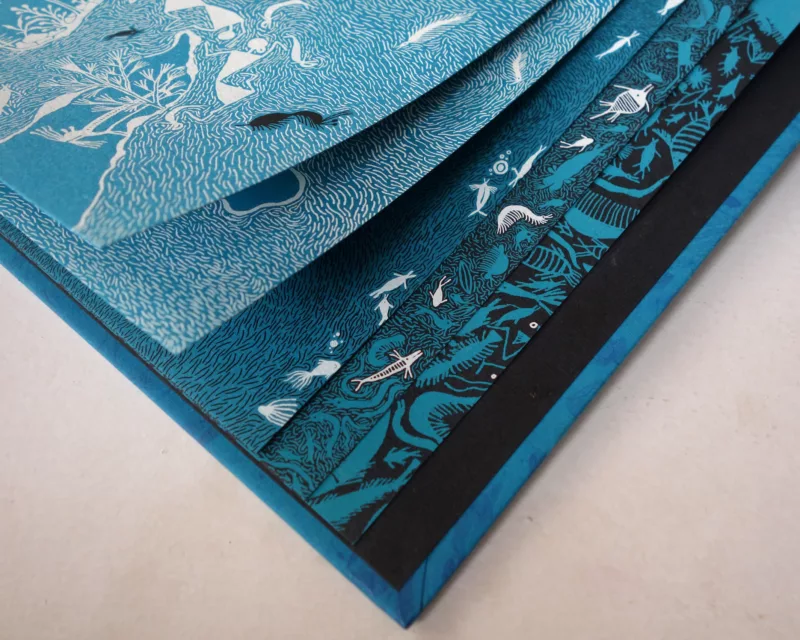
This remarkable book records the response of two artist brothers of the indigenous Warli community in Western India to a six-month residency in Awashima, a small island in the Japanese Sea. It is beautifully-designed, truly a large-edition work of art. Hand screen-printed on hand-made paper, the hardbound cover opens to reveal stitched Japanese binding and a double-page spread, followed by a sequence of four, fold-out illustrations of land and sea-scapes depicted in extraordinary detail. The text and images synthesize tradition and modernity. They offer an exceptional view of the response to international travel by indigenous artists, who were educated in Mumbai, yet chose to remain in their rural, agricultural community.
Traditional Warli art was created by village women on mud-covered walls and floors of houses and communal spaces. It incorporated symbols and also told stories, illustrating rural life and attitudes towards the natural world. The paintings disappear with wear and have to be renewed. In the 1970s, Jivya Soma Mashe began to make paintings on paper and canvas that adapted Warli visual language to a modern art that could travel to be seen and sold; other Warli artists have followed him.
The opening illustration of The Deep shows daily activities in Ganjad, including fishing in the local stream, followed by a large scene of the brothers’ train commute and the vertical massing of Bombay buildings with cranes, that indicate the city’s ongoing changes. Beyond that they illustrate their experience of life in Awashima, welcomed by the local population and surrounded by the ocean and its wealth of unfamiliar aquatic life. The text and imagery develop a metaphor of the human condition that is based in indigenous understanding and enriched by exposure to the wider world.
Julian Rothenstein, ed. “Seeing Things; the small wonders of the world according to writers, artists and others” (Redstone Press, London, 2023) ISBN 978-1-7395076-2-7
Redstone Press
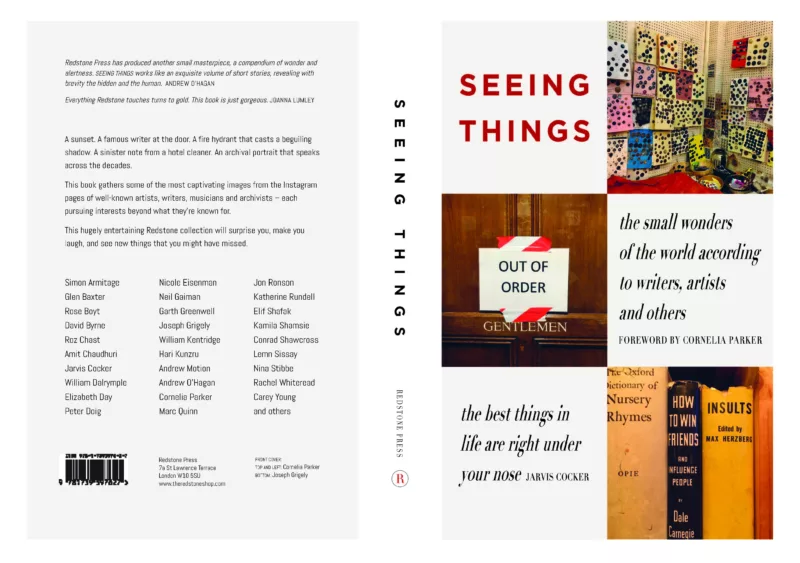
This charming, small book is a true child of the Twenty-first Century in that its contents are culled from the Instagram pages of artists, writers, musicians and colleagues, largely British, with occasional annotations by the poet, Charles Boyle. There must be a word for born-digital content gathered in analog format, but I don’t know it. Or perhaps anthologies just lend themselves to print. Cell-phones have probably superseded “bathroom reading” books, but this volume will be welcome for anyone living off the grid or traveling to places with unreliable access to electricity and the web – or for backward folk like the present writer, who appreciate the physical qualities of carefully-produced books like this one: properly bound with something between soft and hard covers, a softly-rounded spine, and colored endpapers and chapter breaks. Redstone Press is clearly a labor of love.
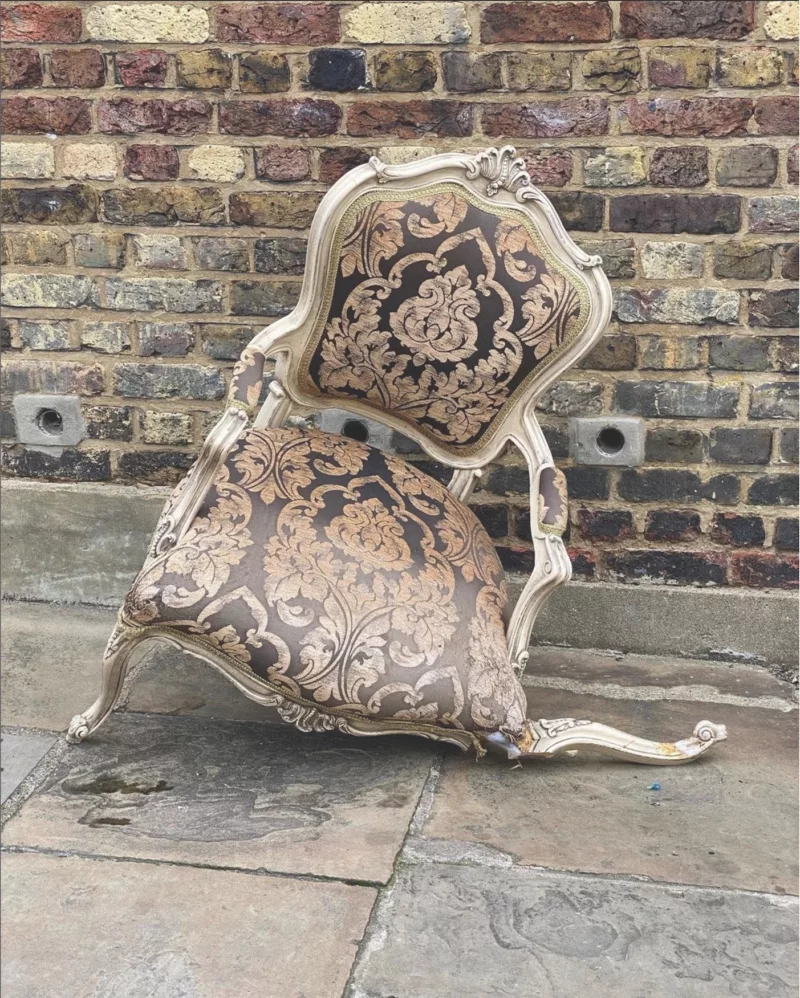
The introduction is by artist, Cornelia Parker, known for an early work where she re-assembled the pieces of a garden shed that she had immolated, and later works that indicated she had befriended conservators and archivists. She credits Richard Wentworth for his hugely-influential Instagram photographs,“Making Do and Getting By,” 750 of which were published in hardback in 2016, and admits that she had resisted social media until it was a requirement of a commission in 2017, and now she’s hooked. Her own contributions here include a snapshot of the corner of a shop that sells single buttons, with commercial button cards on the walls (full disclosure: as a descendent of a purveyor of dry goods, I inherited some of these) and a detail of a confluence of primary-colored paint from an undisclosed location.
Other selections include Rachel Whiteread’s dis-abled side chair, resting on three legs on a sidewalk, Glen Baxter’s Italian street sign for Piazza della Liberta’, above which is mounted a sign indicating the presence of camera surveillance, and Joseph Grigley’s detail of a duck decoy, accompanied by a disquisition on decoys, artists’ collections and the value of slowing down. We look to artists to help us make sense of the world, and these images addressed to an unknown audience certainly remind us that there are wonders to be found everywhere, if we turn away from our screens and pay attention.
Obrist, Hans Ulrich “Luchita Hurtado” (Hauser and Wirth Publishers, Zurich, 2020) ISBN 978-3-9066915-60-9
Hauser and Wirth Shop
When I saw Luchita Hurtado’s first New York gallery exhibition in 2019, I found it very compelling and wanted to see more. She was from a generation of women whose artwork had been overlooked, but like Carmen Herrera, she lived long enough to see the art world pay attention. She produced drawings, paintings and prints, both figurative and abstract. Her subjects were humans, animals, and the natural world; they lacked details that would tie them to specific times or places, but suggested a reverence for life and its large questions, grounded in a woman’s perspective.
Hurtado was born in Venezuela in 1920 and moved to New York City in 1928 to study art. She spent significant time in Mexico City before moving to San Francisco, then Los Angeles, where she lived from the 1950s until her death in 2020. Hurtado was married to two artists: Wolfgang Paalen and Lee Mullican, and mother to another, Matt Mullican, and was always involved in artists’ communities – Surrealists and muralists in Mexico, American Surrealists, and an early feminist community in L.A.. Yet she exhibited rarely and only came to a broad audience when she was 97, in the Hammer Museum’s “Made in L.A. 2018,” followed in 2019 by a her first museum survey exhibition at the Serpentine Gallery, London which traveled to the Los Angeles County Museum of Art, and the gallery exhibition I had seen at Hauser and Wirth, New York.
The book grew out of conversations she had with Hans Ulrich Obrist, curator at the Serpentine Gallery, and while they discuss her art and illustrate a range, the book focuses on the artist. It covers her family life, the various places she lived and how she managed to carve out time and space for her art. Like her near contemporary, Ida Applebroog, who retreated to the bathtub as a place to find the privacy to work, Hurtado created one studio in a closet at home. Hurtado comes across as gracious and wise. The book includes the sort of photographs found in a family album, many of travels and occasions with her children and artist friends. One group illustrates the range of work she collected by ancient and indigenous artists from several continents, which was of notable interest to Surrealists. The book will leave many readers wanting to see more of her work.



